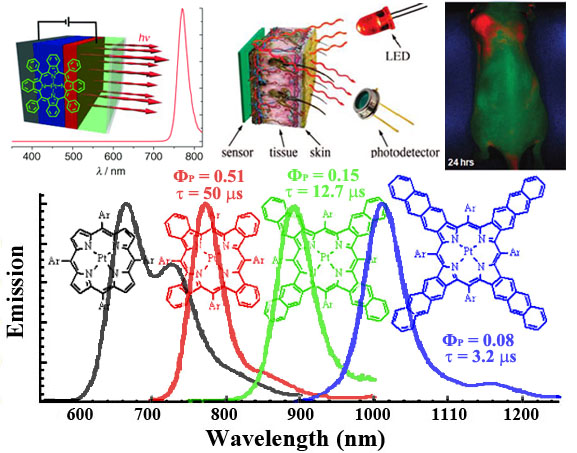博文
近红外磷光:材料及应用(综述)
||
Near-infrared phosphorescence: materials and applications
Chem. Soc. Rev., 2013, 42, 6128 - 6185.
H. F. Xiang,* J. H. Cheng, X. F. Ma, X. G. Zhou, and J. J. Chruma,
Room-temperature phosphorescent materials that emit light in the visible (red, green, and blue;
from 400 to 700 nm) have been a major focus of research and development during the past
decades, due to their applications in organic light-emitting diodes (OLEDs), light-emitting
electrochemical cells, photovoltaic cells, chemical sensors, and bio-imaging. In recent years,
near-infrared (NIR) phosphorescence beyond the visible region (700-2500 nm) has emerged
as a new, promising, and challenging research field with potential applications toward NIR
OLEDs, telecommunications, night vision-readable displays. Moreover, NIR phosphorescence
holds promise for in vivo imaging, because cells and tissues exhibit little absorption and auto-
fluorescence in this spectral region. This review describes the overall progress made in the past
ten years on NIR phosphorescent transition-metal complexes including Cu(I), Cu(II), Cr(III), Re(I),
Re(III), Ru(II), Os(II), Ir(III), Pt(II), Pd(II), Au(I), and Au(III) complexes, with a primary focus on
materia design complimented with a selection of optical, electronic, sensory, and biologic
applications. A critical comparison of various NIR phosphorescent materials reported in the
literature and a blueprint for future development in this field are also provided.

https://blog.sciencenet.cn/blog-581887-675037.html
上一篇:比率荧光/磷光二价铂离子Salen探针
下一篇:多彩Salen希夫碱的合成、光学性质